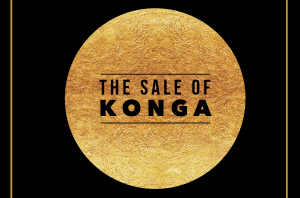
Buyer’s remorse is the sense of regret after having made a purchase. It is frequently associated with the purchase of an expensive item such as a vehicle or real estate.
Buyer’s remorse is thought to stem from cognitive dissonance, specifically post-decision dissonance, that arises when a person must make a difficult decision, such as a heavily invested purchase between two similarly appealing alternatives. Factors that affect buyer’s remorse may include: resources invested, the involvement of the purchaser, whether the purchase is compatible with the purchaser’s goals, feelings encountered post-purchase that include regret.
Buyer Elation is the opposite of buyers remorse. This is a situation where you feel even more happy after you Purchase a product.
Buyers Elation is usually experienced by Spontaneous buyers. These Spontaneous buyers have High emotion/High speed. Buying is thrilling. It’s a fast experience intensified by an emotional high.
For all your e-commerce and conversion smarts, could it be that you’re missing something?
In my corner of the conversion optimization industry, I’m constantly homing in on one of the biggest things that people miss — buyer psychology. It’s an arena of endless research, frequent surprise and discoveries that blow you away.
Best of all, from these psychological insights, I gain conversion optimization strategy that is actionable, tactical, and just plain works.
I don’t really care how much of a ninja you are at A/B testing or landing page optimization. If you miss out on psychology, you’re missing out on a treasure trove of conversion optimization information.
Diving deeper into spontaneous buyers
For spontaneous buyers, the emotion — subjective cognition or perception — is especially strong. Many brands whose target audience consists of impulse buyers are able to capitalize on this emotional strength in their marketing.
What does this look like practically?
Budweiser’s memorable phrase, “This bud’s for you,” captured the chummy, neighborly, let’s-hang-out kind of emotion that a spontaneous buyer would appreciate.
That advertising tagline was filtered through the brain’s processing system in such a way that it empowered the emotion, and drew the spontaneous buyer closer and closer to buying a beer of his own.
They will take risks.
The spontaneous buyer is not afraid of risk.
What practical ramifications does this have?
For starters, they don’t mind the risk of a big purchase. More on that detail in the next point (“They spend big.”).
They’re also willing to spring for avant-garde products.
Have you ever wondered why SkyMall sells such weird things? Few people take a seat on the airplane thinking, “I will make a premeditated purchase of an overpriced bizarre invention that will eventually end up in my attic. Either that or my spouse will sell it to some unsuspecting chump at our garage sale. Oh, and its purported purpose is that it will help me sleep better on an airplane.”
The bottom line? Spontaneous buyers like a little salty, a little spice and little risk.
They spend big.
Because spontaneous buyers take risks, they also tend to spend more money. There’s risk in making large purchases. A diamond ring, a Ferrari, a mansion — these are risky purchases, because of the high cost involved.
That’s exactly what makes spontaneous buyers such big spenders. Spontaneous buyers face no emotional barriers to making a big-ticket purchase. It’s easy. They’re lured in by the price tag.
Consumer analysts estimate that 40% of all consumer spending is impulse-based. Note that that 40% doesn’t refer to the percentage of the population that is spontaneous, but to the percentage of the total expenditure that is driven by an impulse behavior. The message is that these spontaneous people aren’t afraid to open their wallets wide.
They are gregarious, upbeat and positive.
“Asshole” and “spontaneous buyer” don’t usually describe the same person. Why? Because spontaneous buyers are good ol’ boys. They love having a good time, and making a quick and expensive decision to order another round of drinks for everyone at the bar.
A spontaneous buyer is just as likely to give you a friendly slap on the back as he is to buy a new watch “just for the heck of it.”
I paint broadly, but I do so with a point.
Spontaneous buyers, like I said, have strong emotions. Usually, these emotions are of the uplifting and positive kind. That’s why the spontaneous buyer has the emotional insensitivity to take a financial hit and a big risk.
Time Magazine expressed it brilliantly when they headlined their article with this phrase:“Why You Should Shop For Cars When You’re Grumpy.”
And why should you? Because you’re less likely to make a stupid decision. If you’re bouncing from cloud to cloud at heights of elation, you might buy more car than you can afford.
As Time explained, humans are “more sensitive to visual information when in a good mood.” The persistent buoyancy of a spontaneous buyer drives them to respond readily to glitzy ads, sleek cars and pictures of sexy people.
They are competitive.
Competition and spontaneity go hand-in-hand as buying motivators. The spontaneous buyer likes ads that appeal to his or her sense of competitiveness.
Athletic items sell well to spontaneous buyers, because they have that innate sense of speed and competitiveness.
They will act fast.
Have you heard of speed dating? It’s “an organized social activity in which people seeking romantic relationships have a series of short conversations with potential partners in order to determine whether there is mutual interest.”
If identifying your soul mate in 10 minutes or less sounds really appealing, then you probably have a bit of the spontaneous about you.
Obviously, no speed dater in her right mind would marry after 10 minutes of small talk. But the idea of spontaneity is germane to the speed dating concept. It’s about speed.
Spontaneous buyers love speed. A fast purchase is a fun purchase. The more that comes at them in a purchase process, the better.
Spontaneous buyers are more susceptible to upsells in the checkout process. For the snappy spontaneous Ian, buying a domain name from HostGator turns from a three-dollar purchase into a few hundred bucks.
When it comes to speed, you will do well to add as many speed-related urgency signals to your website as you possibly can.
Urgency is about the right now. Faster is the name of the game.
They defy logic.
The fact that a spontaneous buyer defies logic is not an insult to his or her intelligence. Spontaneous buyers are capable and smart people. In the face of purchase decisions, however, they make decisions that seem contrary to prudence and good sense.
“Stupid” is a strong term, but that’s often how we behave when we are in a buying situation. Why? It’s nothing less than cognitive biases — the mind-altering maladies that affect one and all.
Logical arguments, charts, graphs, statistics, data — it’s all great stuff. But for the spontaneous buyer, they don’t really care. Those things don’t have the same persuasive power as other features like powerful visuals, urgency signals, etc.
They respond visually.
Ian and the spontaneous buyers of his ilk, are highly receptive to visual input and stimulation.
Here’s the thing about spontaneous buyers — they often don’t know what they want until they see it. Therefore, an important aspect of targeting these customers is making the product to stand out for them. You can achieve this by using large banners, bold text and other typographic elements that make the product more visible.
Seeing something is the precursor to buying it. There is hardly any cognition between the two events. They see. They buy.
They insist on instant gratification.
Instant gratification is real and powerful. In marketing, it’s virtually irresistible, especially for the spontaneous buyer.
By and large, spontaneous buyers are acting on the desire for instant gratification. Little else matters to them than getting it, and getting it now.
This attitude and its attendant behavior compel spontaneous buyers to do the things we’ve discussed in this article — take risks and spend big.
Summary
To summarize, here are the general characteristics of spontaneous buyers:
1. They are driven by emotion.
2. They will take risks.
3. They spend big.
4. They are gregarious, upbeat and positive.
5. They are competitive.
6. They will act fast
7. They defy logic.
8. They respond visually.
9. They insist on instant gratification.
What do spontaneous buyers love?
To hook a spontaneous buyer, you have to identify those things that will compel action. I want to focus on just a few of those, since these involve practical things that you can do to enhance your online buying experience.
Fast
* Make the funnel short and swift.
* Your website should be fast.
* Don’t complicate the checkout process with additional choices.
*
Exciting
* Visual stimulation is paramount. The website needs to appeal to the eyes, not just to the logical brain.
* Use your most outlandish marketing idea. Chances are, the spontaneous buyer will love it.
*
Expensive
* High prices are no barrier to a purchase.
* If you’re dealing with a predominantly spontaneous customer crowd, you will gain plenty of buyers even if your product seems overpriced.
*
Emotion
* Make emotional appeal the touchstone of your advertising.
* Frontload your emotional arguments, and allow logical persuasion such as data and bar graphs to take a back seat.
*
Identify the things in your conversion funnel that will motivate a spontaneous buyer. Keep them.
Try to intuit the cognitive process of a spontaneous buyer as she proceeds through your conversion funnel. What is going to keep her moving? These are precisely the features and elements that you should retain.
Identify anything missing from your conversion funnel or website that could motivate a spontaneous buyer. Add them.
Need to add some urgency, some competition, or some in-your-face marketing approach? If you want to appeal to spontaneous buyers, you certainly do. Pick a few spontaneous elements to add, and juice up your conversion funnel.
Locate anything on your website or in your conversion pathway that could be a negative trigger for a spontaneous buyer. Remove these things.
These are the things that a spontaneous buyer would hate. Knowing that a spontaneous buyer doesn’t like slow websites or a clunky UX, could you improve on your website or conversion funnel? The slicker, the sicker and the sexier, the better.
Conclusion
If you’ve read this article in its entirety, you know more about the spontaneous buyer than most people on the planet, and more than most conversion optimizers. You can use this knowledge to your advantage.
One major advantage? If you implement spontaneous features in your website, you’ll get more than just spontaneous buyers to make purchases. Data shows that nearly all buyers — 90% according to the New York Post — exhibit spontaneous or impulse buying behavior at some point.
Click here to become a Slaylebrity Curator
By Jeremy Smith





